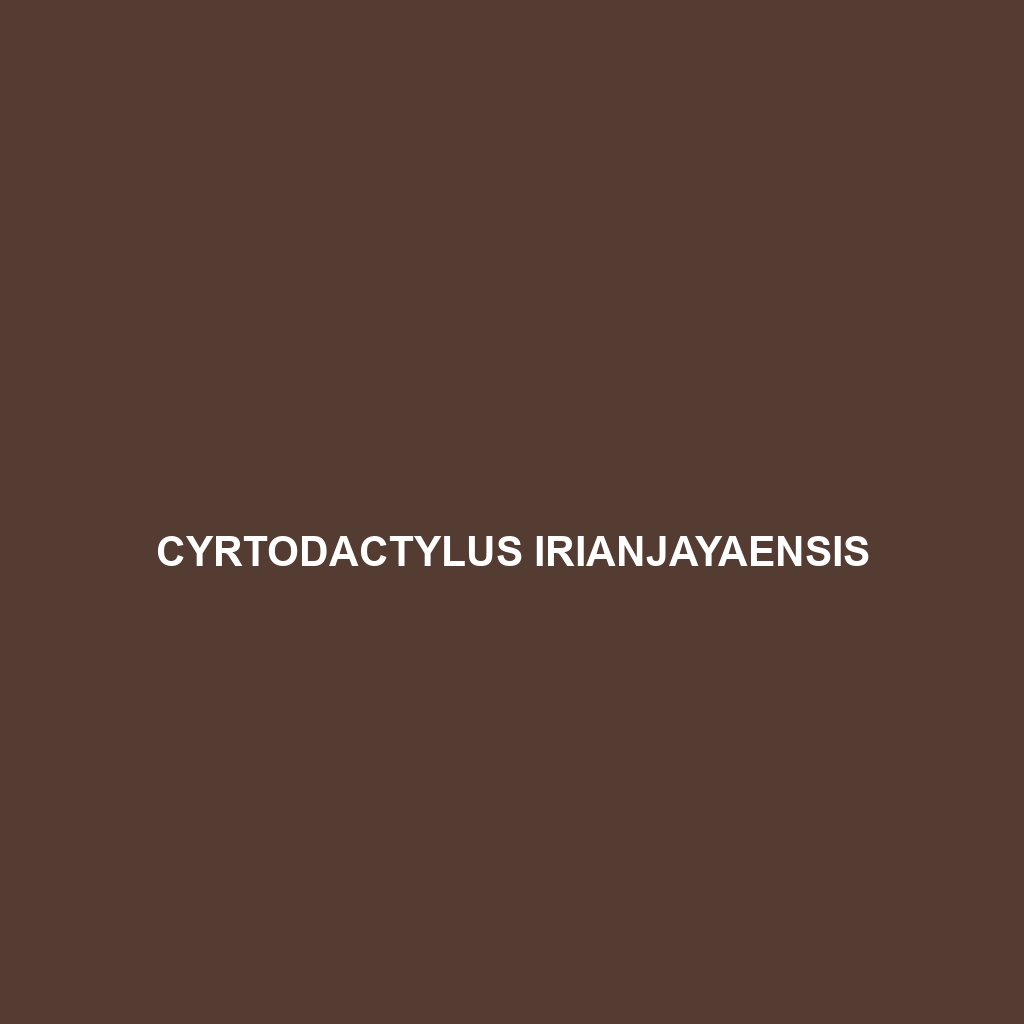Common Name: Cyrtodactylus inthanon
Scientific Name: Cyrtodactylus inthanon
Habitat:
Cyrtodactylus inthanon, commonly known as Inthanon Bent-toed Gecko, is primarily found in Southeast Asia, particularly in the mountainous regions of northern Thailand. This species thrives in subtropical or tropical moist montane forests and is often located in rocky crevices at elevations typically ranging from 1,000 to 2,500 meters. The unique environmental conditions of these habitats contribute to the specialized adaptations of this lizard.
Physical Characteristics:
The Inthanon Bent-toed Gecko typically measures between 10 to 15 centimeters in length. Its coloration varies from light beige to a dark brown, often featuring distinctive patterns of spots or stripes that provide excellent camouflage against its rocky surroundings. One of the notable physical traits of Cyrtodactylus inthanon is its flattened body shape, which helps it to blend in with the stones and leaves on the forest floor. Its prehensile tail is another significant characteristic, serving as a tool for balance and grip.
Behavior:
Cyrtodactylus inthanon displays primarily nocturnal behavior, being most active during the night when it hunts for food. These geckos are known for their agility and climbing abilities, often seen traversing vertical surfaces in search of prey. They engage in a variety of social behaviors, including territorial displays and vocalizations. Males are particularly vocal during the breeding season, using calls to attract females and to communicate with rivals.
Diet:
The diet of Cyrtodactylus inthanon consists mainly of small insects and invertebrates, showcasing its role as an insectivore within its ecosystem. Common food sources include crickets, beetles, and moths, which are often abundant in its forest habitat. The ability to hunt effectively at night allows this gecko to exploit food resources that are less available during the day.
Reproduction:
Cyrtodactylus inthanon exhibits oviparous reproduction, laying eggs in secure environments such as under rocks or in leaf litter. The breeding season typically occurs during the warmer months of the year, with females laying clutches of one to three eggs. The incubation period for these eggs is approximately 60 to 90 days, depending on environmental conditions, leading to the emergence of small, fully formed geckos.
Conservation Status:
According to the International Union for Conservation of Nature (IUCN), Cyrtodactylus inthanon is currently categorized as vulnerable. Habitat loss due to deforestation and land conversion for agriculture poses significant threats to its survival. Conservation efforts are essential to protect the natural habitats that sustain this unique species.
Interesting Facts:
Cyrtodactylus inthanon is unique among its relatives for its exceptional adaptability to high-altitude environments. Furthermore, its ability to change color slightly depending on its surroundings contributes to its survival strategy, making it harder for predators to spot.
Role in Ecosystem:
This species plays a crucial role in its ecosystem as both a predator and prey. By feeding on insects, Cyrtodactylus inthanon helps control pest populations, thus maintaining a balanced ecosystem. Additionally, it serves as a food source for larger predators, contributing to the food web within its montane habitat.
